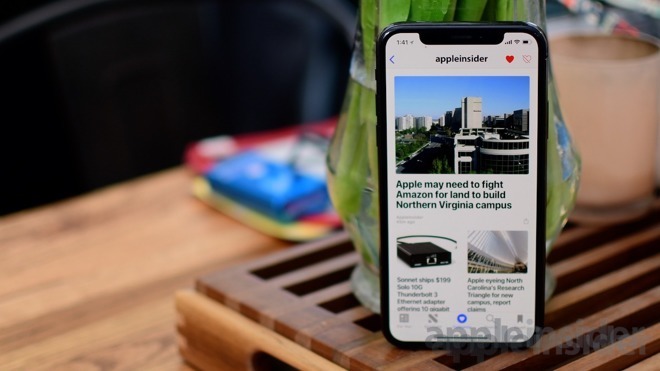Rare peek into Apple News reveals large curation team fighting against algorithms
Apple News aims to minimize the spread of misinformation by prioritizing accuracy over speed, a report about the app's editorial team reveals, with Apple's decision to rely on human curators instead of algorithms to dictate its most prominent stories going the opposite direction of machine-based offerings by its competitors.
The top stories of Apple News are selected by a team of approximately 30 people, the rare glimpse behind the curtain showed, made up of former journalists based in Sydney, London, New York and Silicon Valley. Fielding between 100 and 200 pitches from publishers a day, the team selects the leading five stories for the app, as well as a section of feature stories, with the list changing five or more times a day, depending on the news.
Headed up by former New York Magazine executive editor Lauren Kern, the New York Times reports the team attempts to mix the lineup with top stories accompanied by lighter features and longer investigations. The list of candidates is pared down by smaller groups of editors, spread around the world, before the final order is decided upon by senior members of the team.
"We put so much care and thought into our curation," advises Kern. "It's seen by a lot of people and we take that responsibility really seriously."
As an example of the curation process, a rundown of decisions for one morning in late August notes the decision of the team to go with an affirmative-action lawsuit against Harvard University as its top story, just as other publications decided, with the selection of the Washington Post's report due to it providing the most content and explanation on why the story mattered.
In order to cover racial tensions in Florida's governor race, Kern and her deputy opted for a Miami Herald piece due to its nuance and explanation of the comments, context, and surrounding debate. Other selections for the day included a CBS News video of John McCain's memorial service, a US Open match between Serena and Venus Williams from SB Nation, and one from Bloomberg about 20-hour flights.
"There is this deep understanding that a thriving free press is critical for an informed public, and an informed public is critical for a functioning democracy," claimed Kern, continuing "and that Apple News can play a part in that."
The choice to use human curators instead of algorithms was made to try and better police the constant flow of news than a computer. While algorithmic news selection by FaceBook, Google, and others allow for stories to be quickly and cheaply analyzed for user consumption, it is possible for these mechanisms to be gamed, such as the stories allegedly promoted by Russian trolls during the 2016 presidential election.
"We are responsible for what's in there," said Apple app chief Ross Rosner. "We're not just going to let it be a total crazy land."
The careful approach has helped Apple News avoid major reporting blunders. One example given was the shooting of two people at a gaming competition in Jacksonville, Fla., where headlines claimed the shooter had a hatred for President Donald Trump. Kern warned her staff to be wary of declarations, such as those where assailants are associated with terror groups but later turn out to be incorrect, which led to reports that did not include the false claim to be selected.
While Apple News has considerable reach, with the app read regularly by roughly 90 million people, Apple is also being treated warily by publishers who have made little from advertising on the service, as well as losing out 30 percent of the cost of subscriptions to the company.
"What Apple giveth, Apple can taketh away," advises Columbia University journalism professor Bill Grueskin. When readers are trained to get their news from Apple, Grueskin suggests publishers will then realize "You're at the mercy of Apple."
Earlier in October, publishing executives were complimentary to Apple News for its approach to content creation, calling it attentive and having "the sense they're human beings that are trying to nurture a relationship of some kind."
At the same time the monetization options were considered to be lagging behind competing services, with one publisher advising their outlet earns "hundreds" in revenue despite catering to an audience in the "millions." While one publication stands to make "a few hundred thousand" dollars from Apple News this year, the New York Post estimates it only brought in $600 in six months.
This may however change, as Apple is rumored to be preparing a greater push towards selling subscriptions, following its acquisition of Texture in April.
 Malcolm Owen
Malcolm Owen











 Chip Loder
Chip Loder
 Andrew Orr
Andrew Orr
 Marko Zivkovic
Marko Zivkovic
 David Schloss
David Schloss



 William Gallagher
William Gallagher






